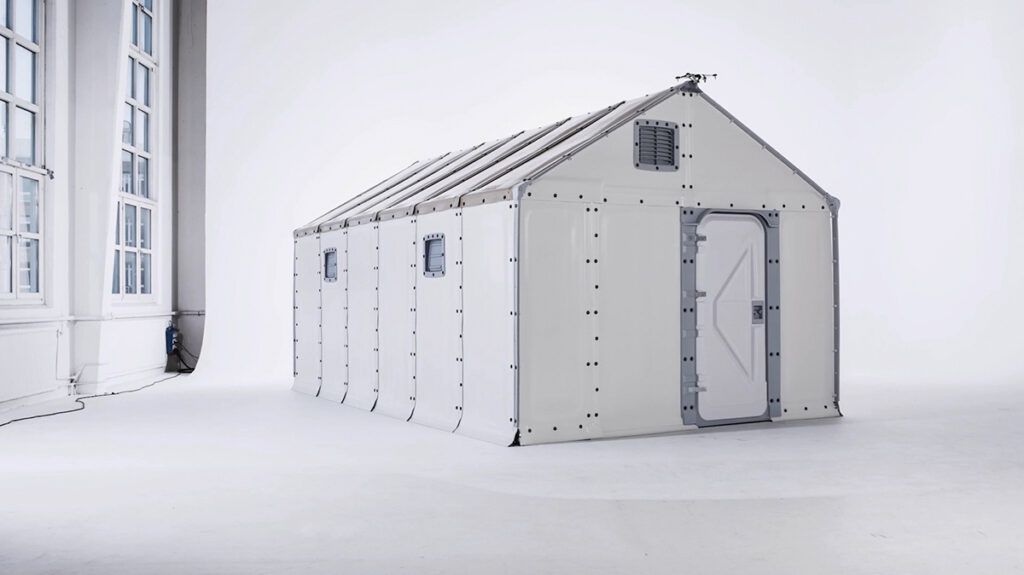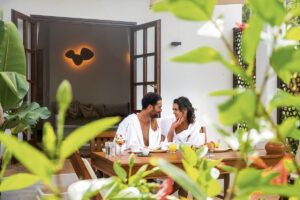“Design is an expression of purpose. It may, if it is good enough, later be judged as art, but first it has to create a solution.” The American designer Charles Eames wrote those words half a century ago, but in today’s crisis climate they are as relevant as ever. As war, drought and environmental disaster become buzzwords for our modern society, we are turning increasingly to design and designers for the solutions.
Human life throughout history has developed in alternating waves of migration and settlement. The transient movement of people across the earth has led to the discovery of new territories and the creation of new communities. Navigating this space between movement and stillness is a fundamental essence of what it means to be human. However, in the aftermath of war and natural disasters, our planet has witnessed the unwilling movement of millions of people. There are currently around 65 million forcibly displaced people in the world, almost half of them children. Many will begin again with nothing but a tent.

Abeer Seikaly is the young Jordanian architect whose response to the global refugee crisis has earned her a Lexus Design Award. Her solution, entitled Weaving a Home, reexamines the traditional concept of the tent by creating a lightweight and easily collapsible yet technically advanced structure using the timeless tradition of weaving. Different fabrics accommodate distinct purposes – mesh for windows and storage, a stretchy, solarcell fabric for sustainable energy – while flexible pipes conduct water, heat and electricity. The structure expands and contracts in response to changing temperatures, and incorporates water storage and washing facilities. When incorporated into a tented city, the standalone pods transcend the basic need for survival and instead create a place where community integrates, heals, and renews.

Community is also at the heart of Swedish design behemoth Ikea’s first foray into crisis design. Delivered flatpacked and taking four people just four hours to erect, Ikea’s Better Shelter units can be grouped together to create temporary cities. The robust 17.5 metre squared structures incorporate a steel frame with insulated polypropylene panels, and last six times longer than typical emergency tents. A rooftop solar panel powers an electric light and a USB charging point, while raised floors provide insulation. Crucially, they are lockable. A few hundred kilometres east of the Syrian border, thousands of Better Shelters have been erected in two camps. Primarily used as single-family units, their modular design can also be clustered. “It’s almost like playing with Lego,” says Per Heggenes, CEO of the Ikea Foundation.
“You can put it together in different ways to make small clinics or temporary schools. A family could also take it apart and take it with them, using the shelter as a framework around which to build with local materials.” Functional design is both an outcome and a process. Its purpose is to give physical form to a gap in people’s needs. In Ibiza, a scarcity of groundwater led Moorish settlers to design intricate irrigation systems, such as those seen at Es Broll and Ses Feixes. In modern Ibiza, the ancient drought problem is amplified, and a design-led solution could be the answer.
«THE PURPOSE OF FUNCTIONAL DESIGN IS TO GIVE
PHYSICAL FORM TO A GAP IN PEOPLE’S NEEDS»

Iran-based BMDesign Studios recently unveiled its Concave Roof project, a double roof system with steep slopes resembling a bowl, for the purpose of rainwater collection in arid climates like the Middle East (or Ibiza), where a lack of water could lead to mass displacement in the future. Precipitation in Iran is less than one third of the world average, and evaporation is more than three times higher than the average. “The concave roof system is designed to make even the smallest quantities of rain flow down the roof and eventually coalesce into bigger drops, just right for harvesting before they evaporate,” says a spokesperson for BMDesign Studios.
In the past, Ibiza’s open-topped rainwater storage tanks, or balsas, were a lifeline during the summer season. Under the guardianship of today’s inhabitants, many have been left to dry out and become overgrown. A sustained rainwater management system will be key to ensuring that the island’s struggling aquifers do not become permanently drained in the future. It is clear that by looking at the approaches of our ances- tors, who were infinitely more in tune with nature and seasonality, today’s product designers are able to develop tools for the future.

In Denmark, design student Kathryn Larsen has been reexploring the use of eelgrass – a type of seagrass not dissimilar to posidonia – for use as a sustainable roofing material. Following in the tradition of Vikings, who used the material to thatch roofs in coastal communities (Ibiza’s Phoenicians may have done the same at Sa Caleta), Larsen has devised a modern-day approach using prefabricated eelgrass-thatched panels suitable for facades and roofs. Eelgrass is naturally fireproof, carbon negative, rot-resistant and becomes waterproof after a year. It also insulates and promotes the growth of plants within it, creating a breathing ecosystem within the building’s structure.

Breathable architecture is nothing new – Ibiza’s ancient fincas were built using materials such as stone, sand, clay and marine plants, which respond to changes in the environment – but it may help mitigate the effects of overdevelopment in the future. In India, a country whose construction industry is set to be the third largest in the world by 2025, a team at Mumbai’s School of Design and Innovation has developed Green Charcoal, an eco-alternative to concrete.
Plants and micro-organisms flourish on the surface of the bricks, made of soil, cement, charcoal and organic loofah fibres, while the charcoal element serves to purify the air by absorbing nitrates. The project’s leads, Shreyas More and Meenal Sutaria, also say that the pores “act as thousands of tiny water tanks”, to reduce the bricks’ temperature and cool interior environments. Consider that Ibiza’s ancient fincas were traditionally designed to stay cool in the summer and warm in the winter, and it’s easy to see how contemporary designers are mining the past to look to the future.











